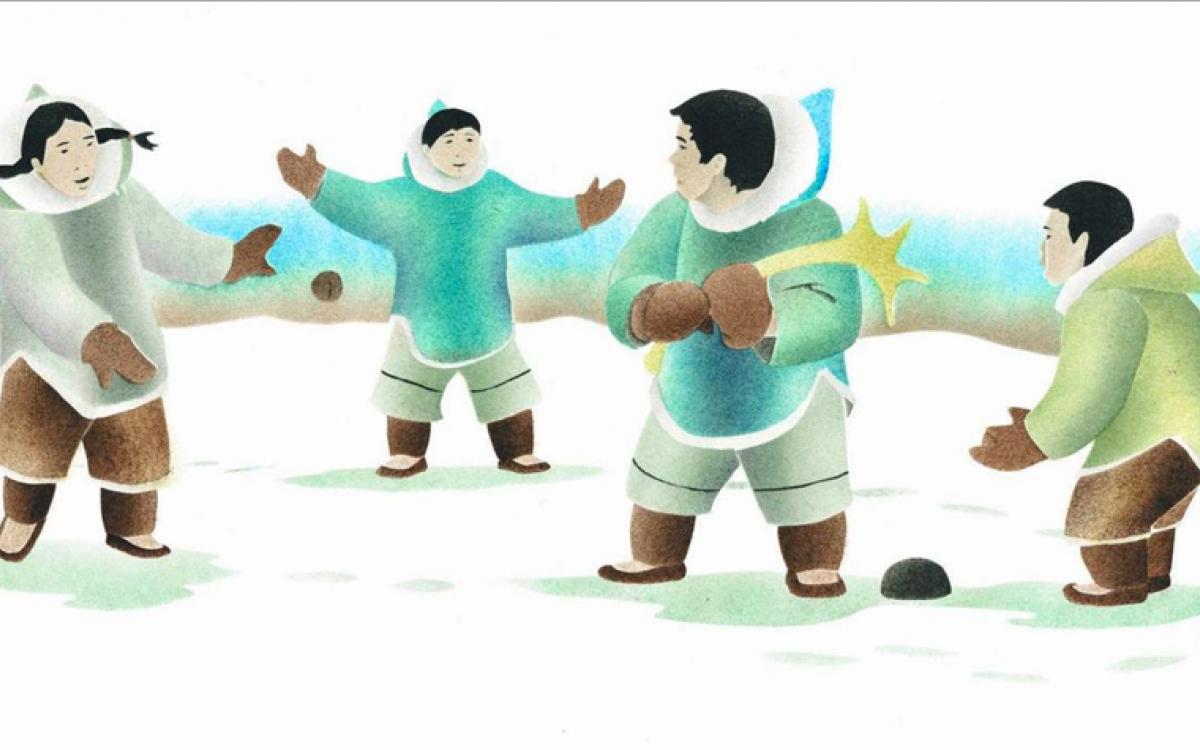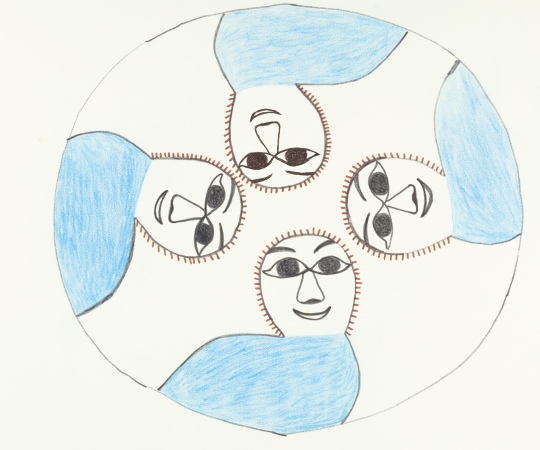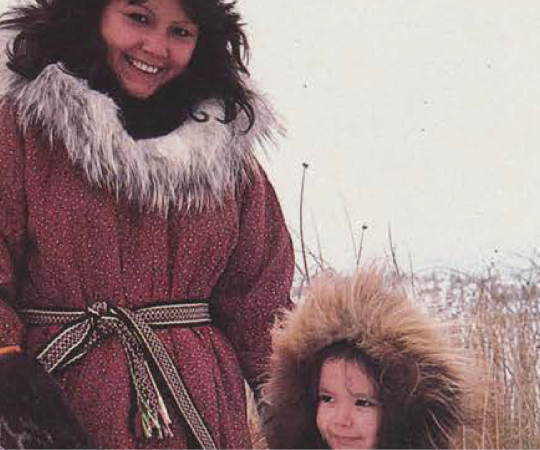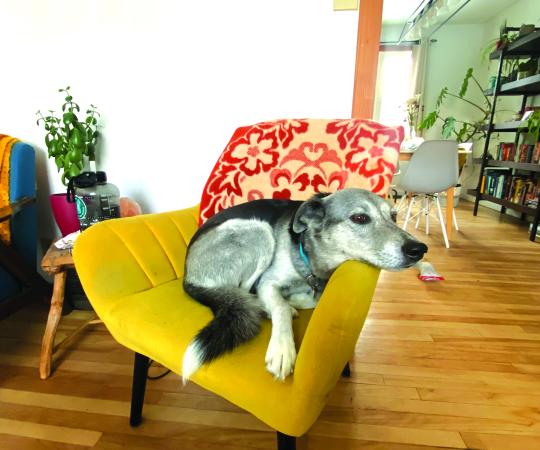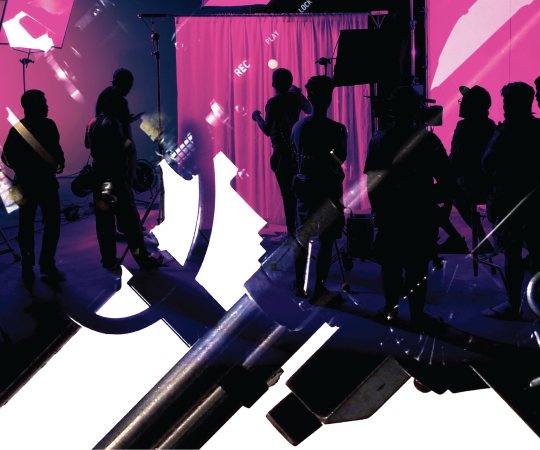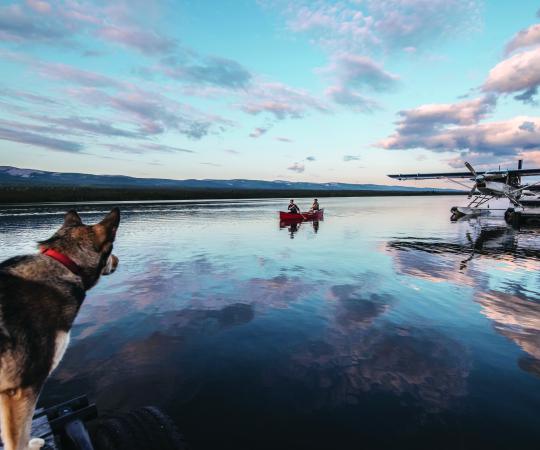The annals of baseball are rich with stories of ruthless competitors who will break bones or break the rules to win. Across the North, a similar game’s been around for more than a hundred years, and though it also ignites the passions of its players, the purpose of the game isn’t to win. It’s all about having a good laugh.
Anauligaaq, or Inuit baseball, was first played in hunting camps with a seal- or caribou-skin stuffed ball, and bone or driftwood bats, and it evolved into a sort of Arctic stickball, played on local streets or schoolyards.
On the Hudson Strait, Lucasi Nappaaluk of Kangiqsujuaq, Nunavik says the game was introduced to Inuit there by whites, and played in coastal summer camps long before the community was established. A sewn cotton pouch stuffed with plants became the ball; bats were typically pieces of beluga whale ribs.
Back then it was played by adults and elders. Now, it’s a kids’ game too. James Tolley grew up playing nightly after-dinner games on Iqaluit’s streets from June to August. He first experienced it as a spectator, watching older kids play with a hard rubber ball. One night, he was knocked out by an errant pop fly that fell out of the fog and plunked him on the head. When he started playing, they used a tennis ball instead.
Like the game’s implements, the rules are fluid and encourage participation. You want people to hit, says Tolley. “It’s about just having fun.”
And once contact’s made, the real fun begins, says Franco Buscemi, who played the game in Iqaluit with a “Pepsi ball”—one of those bouncy blue-and-red rubber balls—and a two-by-four. If you smoke one out there, you can run the bases forever, since you can only get out by being tagged, or by getting drilled with the ball by a fielder. “The most entertaining part is when someone has the ball and they’re faking throws,” he says. “It’s funny—this guy who’s getting ready to dodge, he’s basically dancing.” But the thrower has a calculation to make: a harder throw means more pain for the runner—if it succeeds—otherwise the thrower is going for a run to get the ball.
Pickup games are a rarity today though. Soccer has replaced it as the game-of-choice around Iqaluit; Nappaaluk says the baseball played in Kangiqsujuaq more closely resembles the southern game now.
Yet ten years ago in Sachs Harbour, NWT, Tolley saw some kids playing a version of ball that harkened back to the game he used to play in Iqaluit. “They were using real baseball bats and a softball—but they were throwing it at each other,” he says.
“That would hurt.”
Rules of the game:
ΘThe pitcher throws the ball. You hit it and start running. And that’s where the similarities between anauligaaq and the baseball you grew up playing end.
Θ It doesn’t matter how many players you have or what you use for bats and balls.
Θ Like cricket, you can hit the ball forward or into the tundra behind you—there are no foul balls. Swing and miss? No worries. You bat until you hit the ball.
Θ Upon contact, you take off to the left, running the bases (usually rocks) clockwise.
Θ If the ball’s caught, you’re out. If someone tags you with the ball between bases—or whips it and hits you—you’re out. (If the ball smacks you in the head, you get to go home. Small consolation.)
Θ You can run the bases forever. This comes in handy if you really crank one—or if a neighbourhood dog runs away with the ball. An inning’s over only after an entire team has batted.
Θ You don’t really keep score. That’s the point.
Correction: The original version of this article misspelled anauligaaq.

